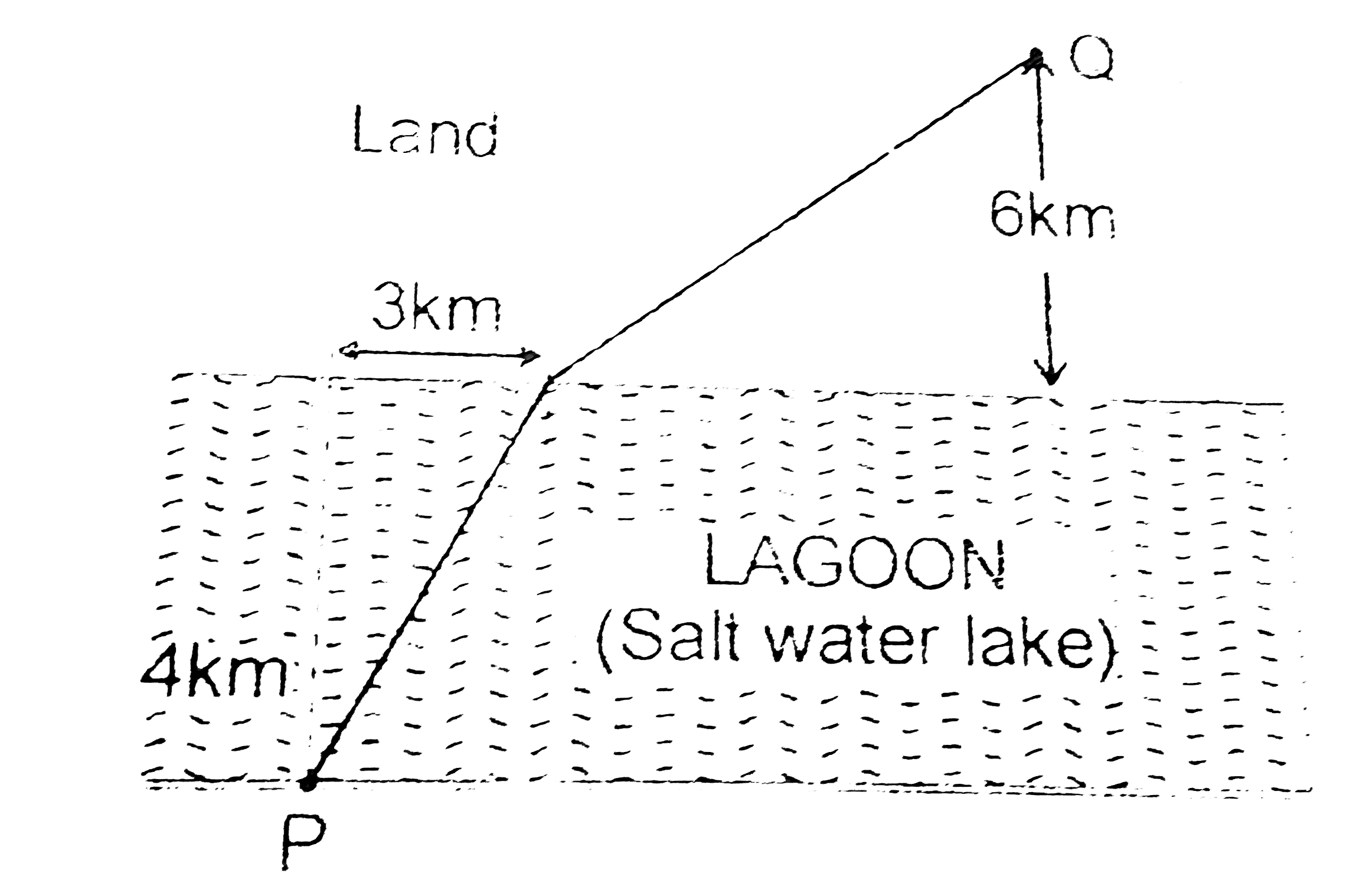In a second ODI match between England and India Bhuwnesh kumar bowled his medium fast bowling. He starts his run up from the distance of 50m from the stumps (bowling end) and at the time of bowling a ball,his speed is 36(km)/(hr) and the speed of ball is 144(km)/(hr).
If his mass is 70kg and mass of the ball is 14kg and the heat produce in his body is one tenth of the total work done by him, then
Energy spent by bowler in throwing one ball is :−
3500 J
200 J
4070 J
3700 J
The correct Answer is:C
To solve the problem, we need to calculate the energy spent by Bhuvnesh Kumar in throwing one ball. We will follow these steps:
Step 1: Convert Speeds from km/hr to m/s
- The speed of Bhuvnesh Kumar (V1) is given as 36 km/hr.
- To convert this to m/s, we use the conversion factor:
V1=36×10003600=10 m/s
- The speed of the ball (V2) is given as 144 km/hr.
- Similarly, we convert this to m/s:
V2=144×10003600=40 m/s
Step 2: Calculate the Work Done by the Bowler
The work done (W) can be calculated using the formula:
W=12m1V12+12m2V22
Where:
- m1=70 kg (mass of the bowler)
- m2=14 kg (mass of the ball)
Substituting the values:
W=12×70×(10)2+12×14×(40)2
Calculating each term:
- For the bowler:
W1=12×70×100=3500 J
- For the ball:
W2=12×14×1600=8004=200 J
Thus, the total work done is:
W=3500+200=3700 J
Step 3: Calculate the Total Energy Spent by the Bowler
According to the problem, one-tenth of the total work done is lost as heat. Therefore, the energy spent (E) can be calculated as:
E=W+110W
This can be rewritten as:
E=W(1+110)=W×1110
Substituting the value of W:
E=3700×1110=4070 J
Final Answer
The energy spent by the bowler in throwing one ball is:
4070 J
- The speed of Bhuvnesh Kumar (V1) is given as 36 km/hr.
- To convert this to m/s, we use the conversion factor:
V1=36×10003600=10 m/s
- Similarly, we convert this to m/s:
V2=144×10003600=40 m/s
The work done (W) can be calculated using the formula:
W=12m1V12+12m2V22
Where:
- m1=70 kg (mass of the bowler)
- m2=14 kg (mass of the ball)
W=12×70×(10)2+12×14×(40)2
- For the bowler:
W1=12×70×100=3500 J
W2=12×14×1600=8004=200 J
W=3500+200=3700 J
According to the problem, one-tenth of the total work done is lost as heat. Therefore, the energy spent (E) can be calculated as:
E=W+110W
This can be rewritten as:
E=W(1+110)=W×1110
E=3700×1110=4070 J
The energy spent by the bowler in throwing one ball is:
4070 J
Topper's Solved these Questions
Similar Questions
In a second ODI match between England and India Bhuwnesh kumar bowled his medium fast bowling. He starts his run up from the distance of 50m from the stumps (bowling end) and at the time of bowling a ball,his speed is 36(km)/(hr) and the speed of ball is 144(km)/(hr).
If his mass is 70kg and mass of the ball is 14kg and the heat produce in his body is one tenth of the total work done by him, then
Select the incorrect statement :View SolutionIn a second ODI match between England and India Bhuwnesh kumar bowled his medium fast bowling. He starts his run up from the distance of 50m from the stumps (bowling end) and at the time of bowling a ball,his speed is 36(km)/(hr) and the speed of ball is 144(km)/(hr).
If his mass is 70kg and mass of the ball is 14kg and the heat produce in his body is one tenth of the total work done by him, then
If he accelerates uniformly to the sumps find the average friction force acting on him :−View SolutionRam covers a distance of 100 km with variable speed. During the first half of his journey his speed was 20 km/h and during the rest of his journey his speed was 40 km/h. Calculate the average speed of Ram during the whole course of his motion.
View SolutionA man goes 40m due north and then 50m due west. Find his distance from the starting point.
View SolutionA man starting from point P cross a 4km wide lagoon and reaches point Q in the shortest possible time by the path shown in the figure. If the person swims at a speed of 3km//hr and walks at a speed of 4km//hr, then find his time fo journey (in minutes).
 .View Solution
.View SolutionA man drives his car uniformly at 30 km/h for three hour After it he covered next 90 km distance with uniform speed of 45 km/hr. Find the average speed of car.
View SolutionA boy walks from his home to a post office at a distance of 0.5 km in 20 min. He then returns to his home in time 25 min. Find the average speed of the boy.
View SolutionIf the coefficient of friction between an insect and bowl is μ and the radius of the bowl is r, find the maximum height to which the insect can crawl in the bowl.
View SolutionIf the coefficient of friction between an insect and bowl is μ and the radius of the bowl is r, find the maximum height to which the insect can crawl in the bowl.
View SolutionA car travels the first half of a distance between two places a speed of 30 km/hr and the second half of the distance a 50 km/hr. The average speed of the car for the whole journey is
View Solution

